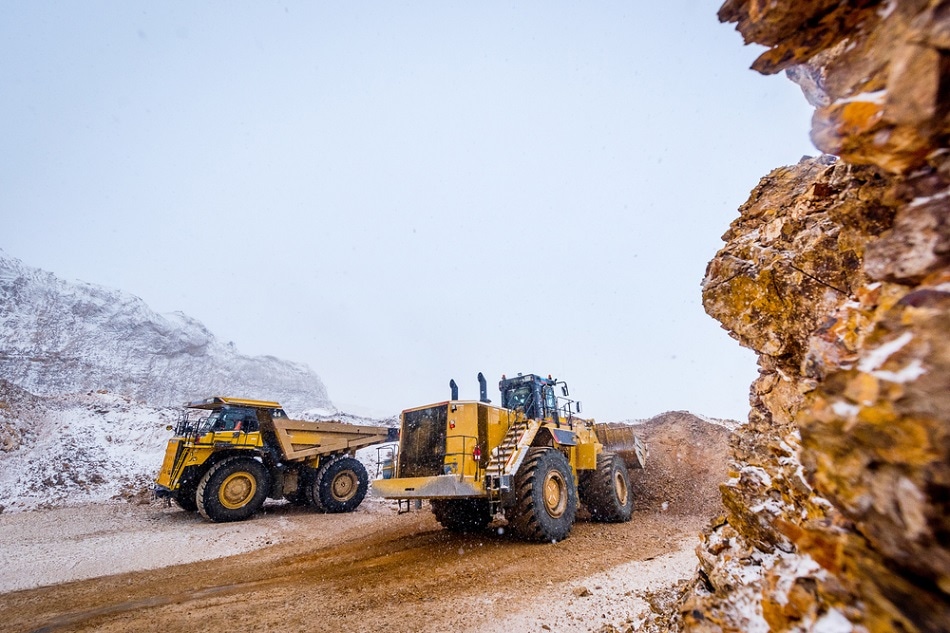Oct 31 2019
Alianza Minerals Ltd announces the 2019 fieldwork results from the Horsethief Gold Property, situated 26 km (16 miles) east of Pioche, Nevada. A comprehensive mapping program was carried out on the property and adjacent area to improve property stratigraphy, locate new targets, and rank targets for drilling.

Image Credits: Mark Agnor / Shutterstock.com
This mining activity was performed under the option agreement with Hochschild Mining (US), Inc., a subsidiary of Hochschild Mining PLC. According to the option agreement, Hochschild is entitled to earn a 60% interest in the project by making exploration expenditures of US$5 million within a span of 5.5 years.
Program highlights include the identification of satisfactory carbonate host stratigraphy, the discovery of new gold-bearing jasperoid, and the mapping of alteration and structural features that may serve as pathways for gold-bearing fluids at Horsethief.
Based on the outcome of the field program, the property was extended. Now, the management, along with the Hochschild technical team, is refining drill targets for a drilling program in spring 2020.
The 2019 exploration program was extremely successful, identifying new mineralized occurrences of jasperoid and prospective carbonate stratigraphy, illustrating potential for Horsethief to host a large gold-bearing system. However, the most interesting outcome was the identification of these features at or near the contact between Cambrian and Ordovician-aged rocks, which are known to host large sediment-hosted gold deposits such as the Long Canyon Gold Mine.
Jason Weber, P.Geo, President and CEO, Alianza Minerals Ltd
The program included thorough mapping focused on structure, lithology, and alteration of the potential limestone and dolostone stratigraphy uncovered at Horsethief. Most importantly, based on lithological features and fossil identification, this program positively assigned stratigraphic ages spanning from upper Cambrian to lower Ordovician.
This is a crucial age determination as it matches with the ages of rocks hosting other most important deposits such as the Long Canyon Gold Mine.
Moreover, the 2019 program located a new window of upper Cambrian to lower Ordovician-aged carbonate stratigraphy with noteworthy jasperoid alteration in the northeast region of the property. In addition, 26 more claims were staked to cover this manifestation as well as potential stratigraphy identified in the southern region of the property.
Horsethief hosts five main drill targets, four target areas established by surface exposures of altered carbonate rocks, and one target at depth, interpreted from induced polarization (IP) and resistivity geophysical surveys. The management is partnering with Hochschild’s technical team to rank these targets for a 2500 m drilling program in 2020.
Horsethief North
The Horsethief North target is a historically drilled surface expression of tectonic and silicified collapse breccias (jasperoid breccias), in what are presently understood to be upper Mendah limestones and dolostones.
Jasperoid breccias have yielded gold values of up to 1.221g/ton (21.94 g/ton historically) from surface grab samples. Shallow drilling has tested the jasperoid exposures with one hole yielding 0.79 g/ton gold over 39.6 m and three holes ending in mineralization.
It is believed that potentially mineralized targets are present at depths below 100 m as evidenced by silicified collapse breccias and “terra rosa” soils matching recessive-weathering karst breccias occurring at stratigraphic levels below earlier drilling. These paleo-karst features may offer vital conduits and traps for hosting gold mineralization.
Thoroughbred
The Thoroughbred target is situated 500 m southeast of the Horsethief North target marked by the existence of silicified collapse breccias (jasperoid breccias) rich in euhedral fluorite. Surface grab samples have yielded gold values assays of up to 0.406 g/ton from a dolostone breccia with silicified matrix. One significant hole tested this target to a depth of 52 m but would not have tested the induced polarization (IP) chargeability anomaly at depth.
Horsethief South
The Southern Jasperoid target is a historically drilled surface expression of tectonic and silicified collapse breccias (jasperoid breccias) in Pogonip limestone near the Cambrian-Ordovician contact. Jasperoid breccias have yielded gold values of up to 1.06 g/ton from surface grab samples.
One historic drill hole yielded 13.7 m averaging 1.22 g/ton gold. Alianza geologists have also identified jasperoid replacing limestone beds, favorable structural preparation, decarbonatization alteration, and paleo-karst features that may be operative conduits and traps for gold-bearing fluids below the depths of previous drilling.
Stallion/NE Jasperoid
The Stallion target has a surface expression of silicified collapse breccias (jasperoid breccias) in carbonates of the Pogonip Group limestones. Surface grab samples have yielded gold assays of up to 0.479 g/ton from silicified limestone collapse breccia (jasperoid breccia). An IP chargeability anomaly lies beneath the target, as does the promising Cambrian-Ordovician contact.
The 2019 drill program identified extra gold-bearing jasperoid alteration in carbonate outcrops northeast of the Stallion, and the claim package was stretched to encompass this new occurrence. The management is aiming to carry out a small IP survey to increase coverage over this new ground.
Mustang
The Mustang target is a conceptual target based on interpreted local geology integrated with subsurface geophysical anomalies. Volcanic rocks seen on the surface are said to overlie down-dropped potential carbonate rocks. Drilling in this area would target a wide IP chargeability anomaly that lies beneath this area (encompassing the Stallion and Horsethief South targets) to establish if it signifies stratigraphically controlled gold mineralization.
Horsethief Gold Project, Nevada
Exploration at Horsethief is aimed at sediment-hosted gold mineralization in a window of Cambrian carbonate rocks overlain by volcanic flows and pyroclastics. Work by earlier operators involved mapping and sampling hematite-rich jasperoid breccia outcrops and shallow drilling.
Historic drilling, usually 100 m or less in depth, yielded multiple intervals of gold mineralization comprising 13.7 m averaging 1.2 g/ton gold and 39.6 m averaging 0.79 g/ton gold, with four holes ending in mineralization. Further geophysical surveys (IP chargeability and resistivity) show that stratigraphy and potentially mineralized targets dip to the east under the volcanic cover and below the extent of earlier drilling.